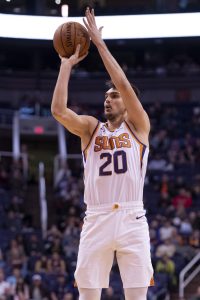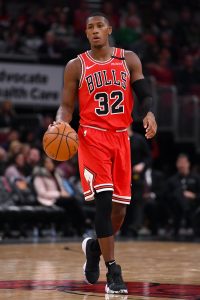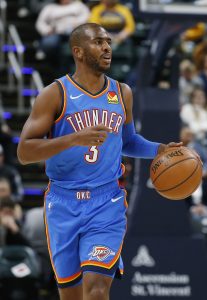Having created a space to track the NBA’s head coaching changes this year, we’re now doing the same for the teams shaking up their front offices.
The front office structure for an NBA franchise generally isn’t as cut-and-dried as a coaching staff. All 30 teams will enter the 2020/21 season employing a head coach and a staff of assistant coaches. But not every team will have an executive with the title of “president of basketball operations” or “executive VP of basketball operations” on its payroll. And while some general managers around the league have decision-making power within their organizations, that doesn’t apply to all of them.
Nonetheless, we’ll do our best to track this offseason’s front office changes in the space below, monitoring which executives have decision-making power in each new management group. Some of these searches could extend well into the summer or fall, so be sure to check back for the latest updates.
You’ll be able to access this page anytime under the “Hoops Rumors Features” menu on the right sidebar on our desktop site, or on the “Features” page in our mobile menu.
Updated 10-24-20 (1:43pm CT)
Active Searches:
None
Completed Searches:
Chicago Bulls
- In:
- Out:
Some combination of Paxson and/or Forman had been running the show in Chicago since Jerry Krause‘s departure in 2003, so when the Bulls overhauled their front office this spring, there was skepticism among fans that the duo known as GarPax would really be stripped of its power.
Paxson remained in the organization and may be involved in some basketball decisions, but Forman is gone, and by all accounts, the Bulls are prepared to give the reins to Karnisovas and his new right-hand man Eversley. One of their first orders of business will be making a decision on head coach Jim Boylen, who is very much on the hot seat.
Denver Nuggets
- In:
- Out:
- General manager Arturas Karnisovas left for job with Bulls (story)
The Nuggets had to replace Karnisovas once he decided to take the top job in Chicago, but didn’t technically conduct a full-fledged search for his replacement, opting instead to stay in-house and promote Booth. He’ll be the new top lieutenant in Denver for president of basketball operations Tim Connelly.
Detroit Pistons
- In:
- Out:
Senior advisor Ed Stefanski has served as the Pistons’ de facto head of basketball operations for the last two years, but at the time of his hiring, he wasn’t necessarily viewed as someone who would hold that position for the next five or 10 years.
With its hiring of Weaver, Detroit has brought aboard a GM who will work with Stefanski and “run the basketball side of things,” according to team owner Tom Gores. While Stefanski, vice chairman Arn Tellem, and head coach Dwane Casey figure to be involved to some extent in basketball decisions, it sounds as if Weaver will take the lead on those matters.
It’s worth noting that the Pistons are expected to hire a couple new assistant GMs, so while their GM search is finished, their front office additions likely aren’t.
Houston Rockets
- In:
- Rafael Stone, general manager (story)
- Note: Promoted from executive VP of basketball operations
- Rafael Stone, general manager (story)
- Out:
After losing McNair to the Kings, the Rockets saw their longtime head of basketball operations exit the organization, as Morey resigned from his GM position.
Rather than launching a full-fledged search for a new general manager, the Rockets promoted Stone, a longtime Morey lieutenant who will take control of the team’s basketball operations department. Assistant GM Eli Witus will take on additional responsibilities as Stone’s new right-hand man.
New York Knicks
- In:
- Leon Rose, president of basketball operations (story)
- William Wesley, executive VP/senior basketball advisor (story)
- Frank Zanin, assistant general manager – pro scouting (story)
- Walt Perrin, assistant general manager – college scouting (story)
- Brock Aller, VP of basketball and strategic planning (story)
- Out:
- Retained:
- Scott Perry, general manager (story)
The Knicks made their changes in the winter, firing Mills during the first week of February and officially bringing Rose aboard less than a month later. Still, we’re including them here because the work they’ve done reshaping their front office has extended into the offseason, with the hiring of Zanin, Perrin, and Aller.
Following the Knicks’ surprising decision to extend Perry’s contract by one year, the next items on the docket include hiring a permanent head coach and deciding how to use their cap room once free agency begins.
Sacramento Kings
In:
Out:
Although Divac’s departure was classified as him “stepping down” from his general manager position with the Kings, subsequent reporting suggested that team owner Vivek Ranadive wanted him to accept a reduced role, with Dumars taking on more power in Sacramento’s front office.
Dumars briefly took the reins as the Kings’ interim executive VP of basketball operations and general manager, and was involved in the search for a new permanent GM, but transitioned to a chief strategy officer position once Sacramento landed on Rockets assistant GM McNair as its new head of basketball operations.
 With that in mind, let’s check in on how this year’s RFAs-to-be will be impacted by the starter criteria. Listed below are the former top-14 picks on track for restricted free agency who have not met the starter criteria. These players will be eligible for qualifying offers worth $4,642,800.
With that in mind, let’s check in on how this year’s RFAs-to-be will be impacted by the starter criteria. Listed below are the former top-14 picks on track for restricted free agency who have not met the starter criteria. These players will be eligible for qualifying offers worth $4,642,800.


